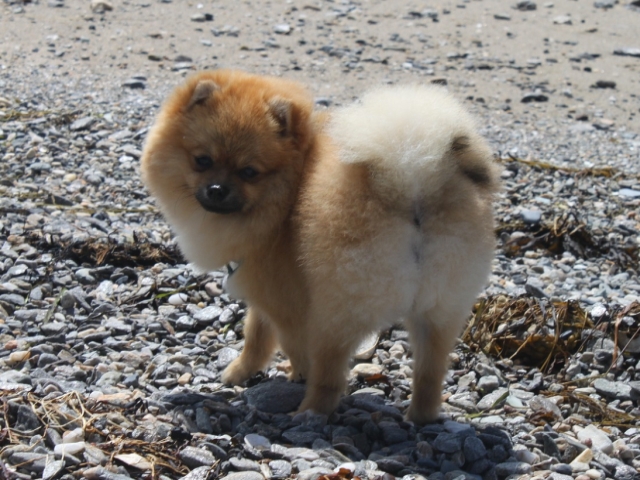
Anal gland cancer is fairly uncommon, but is very serious when it occurs as it produces malignant tumors. Should your dog have an issue with his behind, it’s more likely to be a blockage, infection or impaction of his anal sac. Regular yearly check ups with your vet will include a rectal examination, which can detect a tumor early on.
Your dog’s anal glands are small sacs that are found on either side of his anus. They produce a little liquid that has a scent unique to your dog (though, to you and I it just smells plain unpleasant.) Every time he poops, the anal sacs are emptied. Even a small tumor can cause issues for your dog, and anal gland cancer can spread to other tissues. Sometimes, a tumor can cause elevated blood calcium, which can lead to kidney failure.
Symptoms of Anal Gland Cancer in Dogs
An anal gland tumor may not be visible to the naked eye, as they sometimes grow inward. If your dog has a tumor, you may see some or all of the following symptoms:
- Scooting his hind end along the ground
- Licking of the perianal area
- A lump beside the anus
- Straining and displaying difficulty passing feces
- Blood in the stool
Apocrine Gland Adenocarcinoma may lead to kidney failure due to elevated blood calcium which may present as follows:
- The increased need to drink
- Frequent urination
- Vomiting
- Muscle weakness
Causes of Anal Gland Cancer in Dogs
Doctors have yet to discover a clear cause of anal gland cancer. They do know that male and female dogs are equally susceptible. It’s most often found in older dogs, from medium to middle age. Spaniel breeds seem to be at an increased risk for this type of cancer.
Diagnosis of Anal Gland Cancer in Dogs
Your vet will perform an exam to check for lumps in the perianal area, and will ask you to describe the symptoms and behaviors you noticed.
If a tumor is found, your vet may need to sedate your dog to aspirate the mass and perform a biopsy. Blood tests will give a picture of your dog’s overall health and check for kidney issues. X-rays and ultrasound may be needed to examine the lymph nodes and organs.
Treatment of Anal Gland Cancer in Dogs
As with any type of cancer, early detection is important.
If the cancer hasn’t spread, or spreading is limited, complete removal of the tumor is possible with surgery. Larger tumors may require that some surrounding tissue is removed as well, and enlarged lymph nodes in the abdomen can be removed at the same time.
Chemotherapy will be the second step, which can help prevent the spread of the disease. Radiation may also be required, particularly in cases where complete surgical removal isn’t possible.
If your dog has higher blood calcium levels (hpercalcemia) medicines can be prescribed that will bring the levels back down and will be necessary before surgery.
Recovery of Anal Gland Cancer in Dogs
Follow ups will be crucial to make sure that treatment is working. Clinic visits are required every three months after surgery for at least eighteen months, then twice-yearly visits will be needed for the rest of your dog’s life.
Right after surgery your dog will need an E-collar to keep him from fussing with the area. It will keep him from tearing or infecting the wound by licking and biting. Stool softeners may be prescribed, and you will need to limit his activity while he heals.
He may be constipated for a few weeks after surgery, but it will usually resolve on it’s own. Kidney issues are possible, and will call for a prescription for blood calcium reduction.
How your dog recovers will depend on the size of the tumor and your dog’s overall health.
